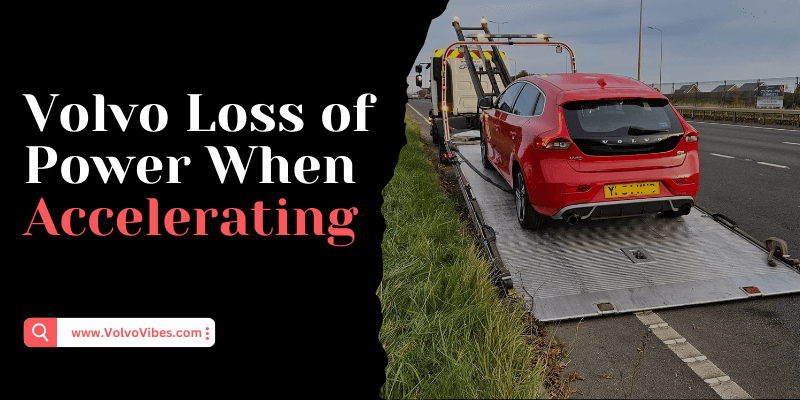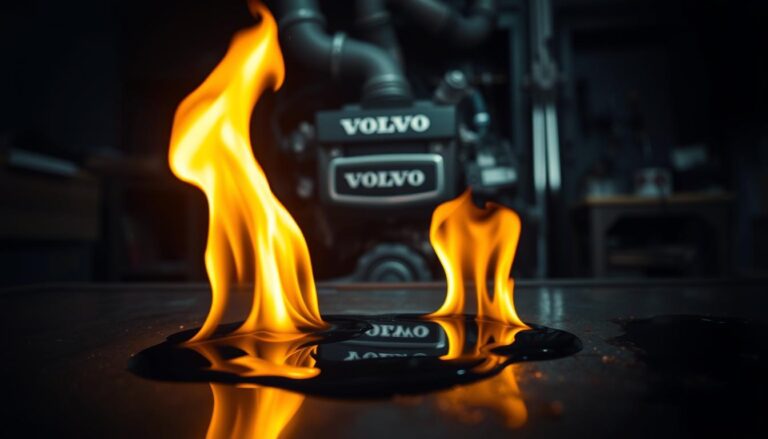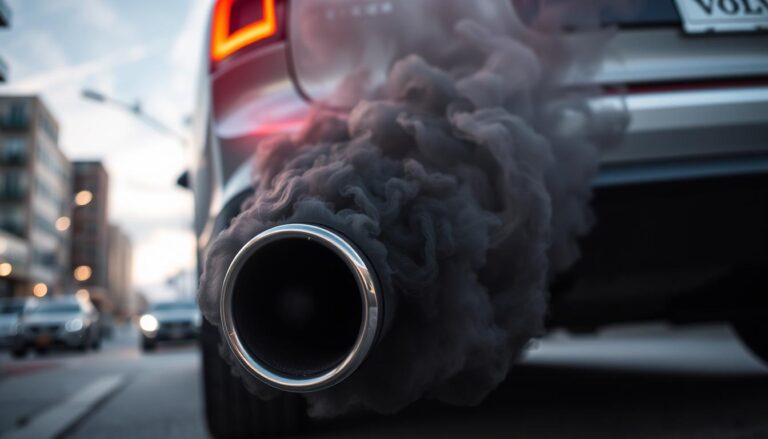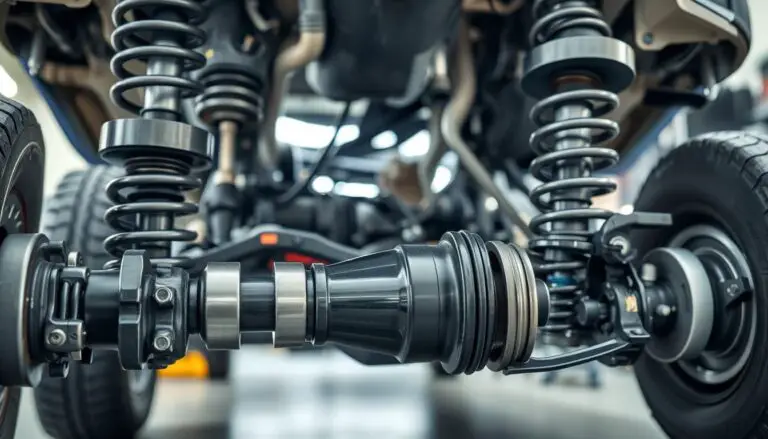Experiencing Volvo loss of power when accelerating can feel frustrating in the middle of the road where you need to speed up. Now keep in mind a number of components could be responsible for this situation.
The main culprits include a clogged EGR valve, faulty DPF temperature sensor, dirty or failing throttle body, low or dirty transmission fluid, fuel system issues (like a bad fuel pump or filter), and turbocharger or air intake system problems.
After giving your fair share of trying to troubleshoot the error, you may still need a professional to give it a check. But before we get there, try yourself once. That’s where I’ll be helping you today!
Troubleshooting a Volvo For Loss of Power When Accelerating

With a step-by-step approach, I’ll help you identify the actual cause of the power loss. You should be able to get your car back to its right performance if this is due to a minor underlying issue. Let’s start!
Step 1 – You Should Start With a DTC Test
You should consider using a diagnostic tool like VIDA (Volvo’s diagnostic system) to start the troubleshooting. This tool helps you to read any fault codes. Simply connect it to your car and it should show the code defining the exact cause of the problem.
I admire Netradyne for their advice on diagnosing DTC codes. They recommend using a reliable scan tool, understanding the codes, noting symptoms, performing visual inspections, and documenting findings for thorough and effective troubleshooting.
The codes may indicate issues with one or more components. However, most of the time it’s issues with the EGR valve, DPF sensor, or throttle body.
If It’s The EGR Valve:
- Start with locating the valve. You will usually find it mounted on or near the intake manifold of your Volvo.
- Carefully detach the EGR valve. Look for any sign of carbon buildup.
- Next, you simply need to clean the accumulation thoroughly.
- In some cases, cleaning might not be enough to resolve the issue. That’s when you should think about replacing the EGR valve.
If It’s The DPF Temperature Sensor:
- You should look in the exhaust system to find the number 2 DPF temperature sensor.
- Grab a multimeter that shall help you measure the resistance within the sensor.
- If there are incorrect readings or open circuits, it’s a sign of a faulty sensor.
- For a failed sensor, there’s hardly any repair process, you should think about replacement.
If It’s The Throttle Body:
- You should check around the intake manifold and find the throttle body.
- Carefully detach it from the system.
- Now buy a throttle body cleaner of your choice. Something that shall help with removing carbon deposits.
- Use the cleaner to thoroughly clean the body.
- Reinstall the part and check if the vehicle can accelerate right without losing the power.
- If the problem still persists, you might need to replace the throttle body.
Step 2 – Move Next To The Fuel System
Next you need to check the fuel pump for proper operation. Try listening for the pump priming with the ignition is being on. You need to replace the fuel filter if it is clogged. Also, if it has not been replaced in a long time.
Consider testing the fuel pressure at the fuel rail. You can use a regular fuel pressure gauge. Carefully compare the readings with the manufacturer’s given specifications. If you find the pressure low, simply replace the fuel pressure regulator or fuel pump.
Step 3 – Low Or Dirty Transmission Fluid Needs Attention
When dealing with a Volvo that fails to preserve its power while accelerating, it’s quite likely you should check the transmission fluid level and condition. Perhaps the low or dirty transmission fluid is what causes power loss and even slipping gears.
To fix this, consider topping up the fluid to its correct level. It could also be a dirty fluid situation. If that’s the case, then you need to consider having a full transmission service. This might involves changing the fluid and filter replacement.
Step 4 – Move Onto the Turbocharger and Hoses
Next, you want to have a look at the turbocharger as well as the hoses. It is a quite common d16 engine problem that contributes to power related issues.
See if you can find any visible signs of damage. You should also check for any excessive play in the turbo shaft. Next, consider checking all turbo hoses and intercooler pipes.
Any sign of splits, leaks, or disconnections can be the main cause behind the power loss situation. In case you find any issues, consider replacing the damaged hoses and make sure all connections are secure.
Step 5 – Make Sure It’s Not the Air Intake System
You should also carefully inspect the air filter to figure out if it’s dirty or clogged by any chance. The air intake system will have an MAF sensor. The failure of this sensor often leads to vehicle starting but dying right after problem, especially if this is an xc70 model.
Make sure you clean any accumulation on it that could be contributing towards the system failure and leading to power loss during acceleration. Finally, make sure to check for any obstructions in the air intake ducts. You need to clear those as well.
Step 6 – Addressing Electrical Issues
If you find any unusual electrical noises coming from the vehicle, take it into consideration. This could be a grinding or rattling sound.
Such weird noises can be indicators of faulty swirl flap motors or other surrounding components.
To test the swirl flaps, consider revving the engine and observing the movement. You need to replace the motor if the movements seem problematic.
Wrapping Up
And there you have a basic troubleshooting guide on dealing with Volvo’s loss of power when accelerating it. After you are done addressing the potential issues consider performing a road test.
This is when you should carefully monitor your Volvo’s performance and try to understand whether the power loss is still evident during acceleration. Let’s say you still feel some sort of tension with your car, go for a professional checkup immediately.
If you have successfully overcome the problem, consider keeping a regular maintenance schedule. I strongly suggest staying attentive to any changes in performance and responding right after to avoid long-term problems in the future.
See You Again In My Next Guide On Volvo!



